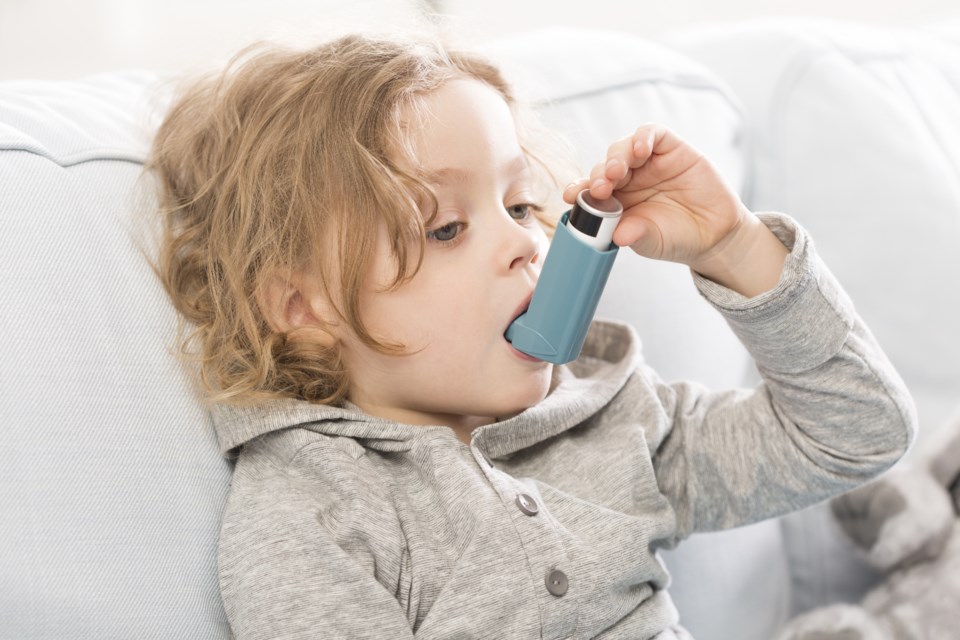Rising global temperatures may be putting the health of Canadian children at risk, the Ontario Public Health Association (OPHA) warns.
Through a new initiative called Make it Better, the OPHA warns that climate change has directly increased triggers for asthma and has facilitated greater populations of ticks that carry Lyme disease — two ailments for which children between the ages of five and nine are most at risk.
In addition, a simple increase in the number of “extreme heat” days per year could impact young children significantly. What we’re trying to convey is that the science is showing that there are risks to our health, and in particular our children are among those that are most vulnerable,” warns Pegeen Walsh, the executive director of the OPHA.
Asthma is currently one of the leading causes of hospital admissions for children in Canada, the OPHA warns.Between 2021 and 2050, metropolitan areas such as Toronto could see over 30 extreme heat days annually — a number that could reach 50 by 2080. These extended warmer seasons mean Lyme disease-carrying tick populations are growing and are active for more of the year.
The initiative cites research from the Canadian Association of Physicians for the Environment (CAPE), the Canadian Institute for Health Information, among other organizations, and emphasizes that while the evidence linking climate change to asthma and Lyme disease is the most robust, there are a host of other ailments, such as West Nile virus, that could be triggered by the consequences of rising temperatures.
What can parents do to protect their children
There are a number of steps parents can take to protect their children’s health amid global warming.
Monitor the air quality
Air quality can be one of the most significant triggers of asthma in children, Walsh said.
First and foremost, parents should monitor air quality before allowing their children to engage in outdoor activities. Parents can do this by regularly checking the air quality index from Health Canada and Environment Canada, which regularly provides real-time ratings and forecasts.
“With the climate changing, what we’re seeing is air pollution pollen seasons lasting longer, forest fires, etc., and these can be triggers for those that have asthma,” Walsh explained. “So there’s a concern about putting children at risk as a result of the changes in air quality.”
It’s also important to check the index regularly. Noelle Selin, an atmospheric chemist and associate professor at the Massachusetts Institute of Technology, emphasizes that the air quality changes by the day.
“There are different sorts of air quality indices that give people an idea of how bad the air quality is on a certain day, and when air quality is bad, it’s usually on hot days in the summer,” she explained.
She went on to say that on days where air quality is low, parents should consider not allowing their children to play outside. The OPHA’s awareness website, makeitbetterontario.ca, also advises parents to use air purifiers and purifier filters to remove particles from indoor air.
Prepare for extreme heat
According to Walsh, Canada could see an increase in “extreme heat” days, which refers to days where the temperature is over 30 C. This trend leaves young children especially vulnerable to heat-related ailments.
“Children, because of their body mass, are particularly vulnerable to heatstroke,” she explained.
To safeguard children from heat-related diseases, Walsh recommends that parents prepare for the heat before going outside by keeping cool drinks readily available and seeking out a shady spot.
She also notes that there are a number of ways to recognize heat stroke that parents should be aware of, including fainting, nausea, headaches, rapid breathing, extreme thirst, decreased urination, and — particularly in children — behaviour changes such as sleepiness or temper tantrums.
Charles Driscoll, a professor at Syracuse University, also notes that protecting against heat-related illnesses is important in preventing other health problems as well.
“When you’re experiencing stress because of high temperature due to heat stress you become more sensitive to to other types of conditions,” Driscoll said.
Avoiding Lyme disease and other pathogens
The first thing parents should do to prevent their kids from catching Lyme disease is to use bug spray — but not just any kind.
The OPHA website states that bug spray containing DEET or icaridin is the most effective in repelling ticks. It’s important to note that some users of bug spray containing DEET have experienced superficial allergic reactions to the product (rashes, skin reactions, etc.).
The website also advises that parents ensure their children are tucking their pants into their shoes, have them shower within two hours of being outdoors and put clothes in a dryer on high heat for 10 minutes.
Walsh notes that Lyme disease in children can lead to paralysis, arthritis or even death in extreme cases.
“We’re seeing an increase in cases for example over six years,” she said. “We’ve gone from 30 cases in Ontario to 300 [between 2009 and 2015]. So with our warming climate, the ticks that carry Lyme disease are moving farther north.”
Slowing down climate change will improve public health
In addition to protecting their families, Selin points out that reducing the effects of climate change can also have a direct impact on improving public health.
“Mitigating climate change has real potential health benefits to populations — the actions are overlapping,” she said.
“For example, less driving, less use of fossil fuels. It’s possible to address both [health challenges caused by air quality and climate change] with the same set of actions. And that’s really important for poor people’s health and well-being both in the near term and the long term.”
- Global News
